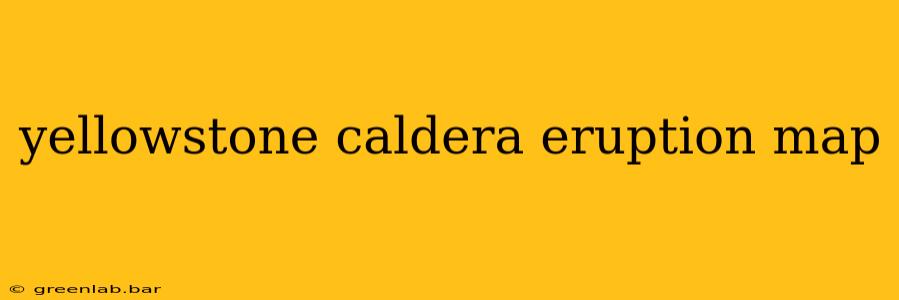The Yellowstone Caldera, a supervolcano located in Yellowstone National Park, is a source of both fascination and concern. Its potential for a catastrophic eruption is a topic frequently discussed, leading many to search for a "Yellowstone caldera eruption map" to visualize the potential impact zone. While predicting the exact scale and location of future eruptions is impossible, understanding the historical patterns and potential consequences is crucial. This article explores the potential impact zones of a Yellowstone super-eruption, emphasizing that this is a complex scientific issue with ongoing research and debate.
Understanding the Yellowstone Caldera
Before diving into potential eruption maps, it's vital to understand the Yellowstone Caldera itself. It's not a single volcano, but rather a vast magma chamber that has produced several super-eruptions over millions of years. These super-eruptions are characterized by incredibly large volumes of ejected material, far exceeding those of typical volcanic eruptions.
The last three super-eruptions occurred approximately 2.1 million, 1.3 million, and 640,000 years ago. These events deposited ash far and wide, drastically altering the landscape and potentially impacting global climate. While a super-eruption is unlikely in our lifetime, understanding the potential impact zone is essential for preparedness.
Visualizing the Potential Impact: Different Scenarios
The effects of a Yellowstone super-eruption would depend heavily on the eruption's magnitude and the prevailing wind patterns at the time. Therefore, a single "Yellowstone caldera eruption map" is overly simplistic. Instead, we should consider various scenarios and the associated risks:
Scenario 1: Local Impact (within hundreds of kilometers)
- Immediate area devastation: Pyroclastic flows, fast-moving currents of hot gas and volcanic debris, would devastate areas within a radius of tens of kilometers from the eruption center. This would lead to complete destruction of infrastructure and loss of life.
- Ashfall: Heavier ashfall would extend to much larger areas, potentially hundreds of kilometers downwind, burying cities and towns under thick layers of ash. This would disrupt transportation, agriculture, and infrastructure, resulting in widespread damage.
- Lahars: Melting snow and ice from the surrounding mountains would combine with ash, forming fast-moving mudflows (lahars) that could travel long distances, destroying everything in their path.
Scenario 2: Regional Impact (thousands of kilometers)
- Widespread ashfall: Ash would travel across vast distances, reaching potentially thousands of kilometers depending on wind patterns. This could impact air travel, disrupt agriculture, contaminate water supplies, and cause respiratory problems in affected regions.
- Climate change: The massive volume of ash ejected into the atmosphere could significantly affect global climate, potentially causing a "volcanic winter" characterized by reduced sunlight and lower temperatures. The extent and duration of such an impact are debated, but studies suggest significant changes are possible.
Scenario 3: Global Impact
- Long-term climate change: While short-term impacts are hard to predict with precision, a Yellowstone super-eruption could lead to years or even decades of global climate disruption. Agricultural production could be severely affected, potentially leading to food shortages.
The Limitations of a Simple Map
It's important to reiterate that creating a single, definitive "Yellowstone caldera eruption map" is misleading. The impact zone depends significantly on several unpredictable factors including:
- Eruption magnitude: The size and intensity of the eruption will determine the extent of the affected areas.
- Eruption style: Different eruption styles (e.g., Plinian, effusive) will have different impact patterns.
- Wind direction: Prevailing wind patterns will greatly influence the dispersal of ash.
- Time of year: The time of year will influence the impact of lahars (melting snow and ice).
Ongoing Research and Monitoring
Scientists continuously monitor the Yellowstone Caldera using various instruments to detect subtle changes in ground deformation, gas emissions, and seismicity. This ongoing monitoring helps researchers assess the volcano's current state and improve predictive models. While predicting the exact timing of a future eruption is currently impossible, this monitoring is crucial in providing early warning signs if an eruption becomes imminent.
In summary, visualizing the potential impact of a Yellowstone caldera eruption necessitates a nuanced understanding of various scenarios and their associated uncertainties. While the prospect of a super-eruption is concerning, ongoing scientific research and monitoring provide valuable insights into the volcano's behavior and the potential consequences, helping communities plan for preparedness.

